What’s CPD and why is it important?
With technology evolving every day, keeping your skills and knowledge up to date is more important than ever. But it can be tricky to know where to start. That’s where CPD comes in...
CPD, which stands for continuous professional development, is your professional growth toolkit. It can include anything from workshops and online courses to hands-on experiences — every learning opportunity that contributes to your professional development counts as CPD!
And it’s more than just keeping up with a changing landscape; it’s about opening up new opportunities and making a real impact in your field. Find out more about why CPD is so important in achieving your career goals.
What are the benefits of CPD?
Investing in your professional growth is vital for thriving in a dynamic work environment. By committing to your continuous professional development you can...


Advance your career
Open doors to exciting promotions and new career pathways.

Develop skills
Refine your existing skills and master brand-new ones to set yourself apart.

Stay relevant
Keep ahead of the curve by aligning your knowledge with the latest industry trends.

Boost confidence
Equip yourself to take on challenges and know you’ve got what it takes to succeed.
Types of CPD
To get the most out of CPD, be sure to focus on opportunities that add value to your career. Explore our examples of CPD to find inspiration for your own development. Some approaches you can take are:
Active learning
Dive into hands-on workshops and practical exercises that boost your skills — this is all about learning by doing!
Passive learning
Absorb knowledge from lectures, articles and books without active participation — strengthen your knowledge and spark new ideas.
Self-directed learning
Take charge of your own skill-building by choosing topics you’re truly passionate about and learning at your own pace.
Ready to get started? Dive into...

Get more out of CPD with BCS
We offer a host of CPD opportunities for our members! Not ready to join just yet? You can also create a free account to get a taste of exclusive member content in our CPD library, BCS Discover.
Are you an employer? Discover how we can help you invest in your people




















